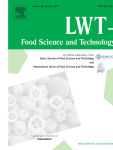Ver ítem
- xmlui.general.dspace_homeCentros e Institutos de InvestigaciónCIA. Centro de Investigaciones de AgroindustriaInstituto de Tecnología de AlimentosArtículos científicosxmlui.ArtifactBrowser.ItemViewer.trail
- Inicio
- Centros e Institutos de Investigación
- CIA. Centro de Investigaciones de Agroindustria
- Instituto de Tecnología de Alimentos
- Artículos científicos
- Ver ítem
Heat and anaerobic treatments affected physiological and biochemical parameters in tomato fruits
Resumen
The aim of the present work was to evaluate the effect of thermal and anaerobic treatments on physiological and biochemical parameters in a variety of tomatoes (Lycopersicon esculentum Mill. cv. Colt 45). Treatments applied to mature green tomatoes were: (A) heat treatments by water immersion at 42 °C for 30 min (HS30′) or for 60 min (HS60′); or by air at 38 °C for 72 h (HS72h); and (B) anaerobic treatments carried out at 20 °C under humidified nitrogen
[ver mas...]
The aim of the present work was to evaluate the effect of thermal and anaerobic treatments on physiological and biochemical parameters in a variety of tomatoes (Lycopersicon esculentum Mill. cv. Colt 45). Treatments applied to mature green tomatoes were: (A) heat treatments by water immersion at 42 °C for 30 min (HS30′) or for 60 min (HS60′); or by air at 38 °C for 72 h (HS72h); and (B) anaerobic treatments carried out at 20 °C under humidified nitrogen atmosphere for 3 days (ANA3d) or 6 days (ANA6d). After treatments, fruits were stored at 2 or 14 °C. Parameters evaluated were: colour, total acidity, major organic acids, firmness, and ethanol and acetaldehyde concentration. Anaerobic and long-term heat shock treatments inhibited colour development irrespective of storage temperature. Air heat treatment reduced tritratable acidity by increasing malic acid metabolism. Anaerobic treatments induced ethanol accumulation, which could be reversed during storage for the short treatment (3 days), but not for the longer treatment (6 days). Acetaldehyde concentration was increased by anaerobic treatments, but also by immersion in hot water for 60 min, which would produce a “low-aerobic” environment.
[Cerrar]

Autor
Fuente
Food Science and Technology 39 (1) : 27-34 (January 2006).
Fecha
2006-01
ISSN
0023-6438
Formato
pdf
Tipo de documento
artículo
Palabras Claves
Derechos de acceso
Restringido
 Excepto donde se diga explicitamente, este item se publica bajo la siguiente descripción: Creative Commons Attribution-NonCommercial-ShareAlike 2.5 Unported (CC BY-NC-SA 2.5)
Excepto donde se diga explicitamente, este item se publica bajo la siguiente descripción: Creative Commons Attribution-NonCommercial-ShareAlike 2.5 Unported (CC BY-NC-SA 2.5)

